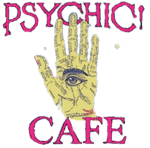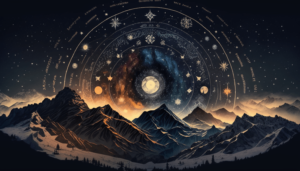
For many people who develop an interest in Tarot and decide that they would like to read the cards for themselves, deciding on a deck can be an extremely challenging decision. There are so many different decks out there, it can be hard to know where to start.
To help with this, in this
article you will find some general tips on selecting your deck, as well as some
details about the different decks available to help get you started on your
journey.
Tips for choosing a Tarot deck
Firstly, the myth that you can’t buy your own Tarot deck and that it has to be given to you is just that, a myth. The origin of this myth is unknown, but many of the occult aspects of Tarot as it is practiced today were developed by the esoteric order known as the Hermetic Order of the Golden Dawn that was active in the late 19th and early 20th centuries. They may have said this as a way to reinforce the idea that you needed to join the society, with its secret initiation rites and costs in order to become a Tarot reader. I personally prefer buying my own Tarot cards as it means I can choose a deck that I have an affinity with.
At the end of the day, Tarot cards are just printed paper, they are a tool that helps us access our intuition. Of course, having the right tools, and looking after them is important, but the vital thing when selecting a Tarot deck is that the deck connects with your intuition. You are looking for a deck that makes you feel good when you are holding the cards in your hands, and you feel inspired when you look at the imagery. Since Tarot cards are about intuition, you should go with your gut when selecting your deck.
Fortunately, there are many reviews of different Tarot decks available online, and I suggest taking the time to look at the different decks online. It can be hard to know if the cards are right for you until you start using them. You may find when you start that they just don’t speak to you in the way that you expected. Sometimes it means that you just need more practice, but this can also be a sign that you need to try a different deck. There is always some trial and error involved. I’ve gone through several decks over the years, not because each of them was wrong for me, but as I have evolved as a reader my needs have changed. That is part of the reason why there are so many Tarot decks out there, many experienced users eventually decide that they want to make their own deck, modifying their favourite deck to more precisely align with their intuition, and then they share their new deck with the community.
While there are many different
types of decks out there, in general they fit into three categories:
Marseilles, Rider-Waite and Thoth. Each family of decks is governed by some
shared principles, but then there are a variety of flavours within each family
as users have made adjustments to some of the art and symbolism to produce
their own decks. There are, of course some outliers that don’t fit into these
families. If you come across one of these and it speaks to your intuition, they
are worth researching separately.
The Different Decks
As a quick history, playing cards were actually brought to Europe by Islamic soldiers that invaded Northern Italy, Sicily and Spain in the 1500s. Elaborate hand-painted cards with intricate designs, they were more akin to modern Tarot cards than playing cards. The Italians adopted these cards for games, including a storytelling game where cards were laid out randomly and players had to make up silly poems about one another based on the cards on the table. The French occultists, most notably Antoine Court de Gebelin, adapted the cards for Tarot, merging the deck with ideas from Egyptian religious texts.
Using Gebelin’s ideas, which he published in 1781, several decks were printed, the most famous of which was printed in Marseille, and thus became known as the Tarot of Marseille deck. In the early 20th century the Marseille deck was heavily revised by occultist A.E. Waite and published by William Rider, and was thus called the Rider-Waite deck. First published in 1909, it has not been out of print since, despite the fact that the original plates and artwork were lost during World War II.
Later in the 20th century
the famous English occultist Aleister Crowley made further changes to the deck,
producing the Thoth Deck. In the
late 1930s Crowley worked with artist Lady Frieda Harris to include more occult
themes in his Tarot deck. What started out as a six-month project took on a
life of its own, and his deck was only published in 1969, after both Crowley
and Harris had died.
Tarot of Marseille
This style of deck contains the standard 78 cards, 56 Minor Arcana and 22 Major Arcana. The 56 Minor Arcana come in four suits, Batons (Bâtons), Swords (Épées), Cups (Coupes) and Coins (Deniers). Each run from Ace to 10 and have four face cards Page (Valet), Knight (Cavalier), Queen (Dame) and King (Roi). These Minor Arcana look much like regular playing cards, with simple art work, and the number cards don’t have art work beyond their count. For example, the Three of Cups will simply have three cups depicted on the card.
While we say that there are 22 cards in the Major Arcana, in the Tarot of Marseille The Fool card is actually not numbered and is considered separate from the other 21 cards in the Major Arcana, which are numbered. In the other style deck, the Fool is numbered as 0. The artwork on the Major Arcana cards is much simpler than seen in the other deck families. The cards also contain a significant amount of Christian imagery and themes. For example, it has Pope and Papess cards, which are known as the Hierophant and the High Priestess in the other deck families.
These cards were originally playing cards, that French occultists adapted for use in Tarot. This means that it is much more down to the reader to intuit the meaning of the cards, without the assistance of visual stimuli, especially in the case of the Minor Arcana.
A Tarot of Tarot of Marseille may appeal if you have an
affinity for very old traditions, if the simplicity appeals to your senses or
you are drawn to the strong Christian symbolism.
Rider-Waite
Designed specifically for use in Tarot, this is the most popular style deck in the English-speaking world. The artwork of these cards is much more detailed than the Tarot of Marseille, which is especially obvious when it comes to the Minor Arcana. Rather than simply depicted the number of the card, each card shows a vignette of people engaged in some kind of activity. For example, the Three of Cups now shows three young women dancing together and raising their cups with suggestions of celebration and sharing bounty. It is also with Rider-Waite.that Batons become Wands and Coins become Pentacles.
All the cards, Major and Minor Arcana, feature symbolism drawn from Astrology, Kabbalah and occult practices.
Rider-Waite. cards also re-order some of the Major Arcana from the Marseilles system. The Justice card and the Strength card, which are number 8 and 11 respectively in the Tarot of Marseille, are switched in the Rider-Waite. system.
Rider-Waite. style
cards are generally considered the easiest for those who are just starting out.
This is because the imagery is generally relatable and easy to understand, and
because as such a popular deck there is a huge amount of information available
to help the new user figure out how to use and interpret the cards.
Thoth Deck
The Thoth Deck uses more surreal and symbolic imagery and incorporates more esoteric and occult themes. They are designed for true students of the occult that want to dive deep into these such as Kabbalah.
In the Minor Arcana the masculine Page court card is re-imagined as a female Princess card, creating a gender balance among the court cards. Meanwhile the Minor Arcana return to the more simplistic depiction of just the number of the cards – the Three of Cups showing just three cups – but with much more stylised art work. Each card also receives a subheading describing the core motivational aspect (for example Fear or Lust).
The Thoth Deck renames some of the Major Arcana. For example, Strength becomes Lust, Justice becomes Adjustment (and both are returned to their original position as in the Tarot of Marseille), Temperance becomes Art and Judgement becomes The Aeon. These changes remove some Christian symbology to align the cards more with occult theology. For example, the Rider-Waite. deck carried Judgement over from the Marseilles deck, and maintained the imagery of an Angel blowing a trumpet. The Aeon represents an era of divine influence in historic Egyptian beliefs, and in the Thoth Deck the symbolism of the Aeon card shows the dawn of a new era.
Another key difference between Thoth cards and other Tarot decks is that Thoth cards do not have an upright and a reverse state. With the Rider-Waite. and Marseilles decks, you determine whether the reading of a card is positive or negative based on whether it is drawn upright or reversed. In the Thoth Deck, card reversals are not used, but rather the reader must determine whether the card is positive or negative based on where it sits in relation to the other cards on the table. If there are cards of the opposite element or suit adjacent to the card, it can be read as negative, while aligned suits suggest positivity.
The Thoth Deck may appeal if you are a
deep interest in the occult, and want to link your Tarot practice into other
occult practices, or if you are the type of person who likes to constantly
discover new layers of meaning as you get to know the cards better.
Modern Decks
As you browse the web you will see many modern Tarot decks such as the Golden Thread or Bifrost Tarot decks, that appear to bear little resemblance to the three archetypal decks described here. But, while the imagery used on these cards is unique, they are based on the Rider-Waite and Thoth Tarot systems respectively.
Whether you start by choosing a
Tarot family, or start by exploring the artwork of different cards and then
trace back to the family, is up to you.
Final Thought
Remember that your Tarot cards are only a tool for accessing your intuition, so while choosing the right deck is important, they will have little use if you don’t work on nurturing your intuition and tapping into it.
Intuition is described in many ways, but for me it is the information that is held in our subconscious. Our senses (including psychic senses) absorb so much information about the world that it is impossible for our conscious mind to process it all, so our conscious mind filters that information and only gives us what it thinks we need. But the subconscious mind keeps and processes all the information gathered by our senses, and will send us that information in times of need, often manifesting as an unexplained feeling or gut reaction. Tarot is about actively accessing the information held in our subconscious, rather than waiting for circumstances to send the information up.
There are many ways to nurture the subconscious and improve your ability to access it deliberately. Practicing presence, really observing the moment rather than letting your mind wander to other concerns, is a great way to feed your subconscious high-quality data and ensure that important information isn’t missed. Starting a meditation practice is a good way to quiet the conscious mind, giving it capacity to pick up on more of the insights developed by the subconscious mind.
So, as well as investing in the right deck, if you want to get the most out of your Tarot readings, make sure you take the time to invest in yourself as well.




